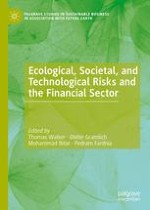Today’s financial sector faces multiple challenges stemming from ecological, societal, and technological risks such as climate change, political extremism, and cyber-attacks. However, these non-traditional risks are yet to be fully identified and measured, in order to ensure their successful management. This edited collection sheds light on the topic by examining the unique measurement and modelling challenges associated with each of these risks, and their interaction with finance.
Offering a comprehensive analysis of non-traditional finance risks, the authors provide the basis for developing appropriate risk management techniques. With new approaches to protect against emerging threats to the financial sector, this edited collection will appeal to academics researching sustainability, development finance, and risk management, as well as policy-makers and practitioners within the banking sector.
